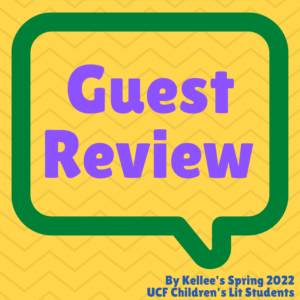Guest Reviewer: Natalia, UCF Elementary Education Student
A Butterfly is Patient
Author: Dianna Hutts Aston
Illustrator: Sylvia Long
Published May 18th, 2011 by Chronicle Books
Summary: The creators of the award-winning An Egg Is Quiet and A Seed Is Sleepy have teamed up again to create this gorgeous and informative introduction to the world of butterflies. From iridescent blue swallowtails and brilliant orange monarchs to the worlds tiniest butterfly (Western Pygmy Blue) and the largest (Queen Alexandra’s Birdwing), an incredible variety of butterflies are celebrated here in all of their beauty and wonder. Perfect for a child’s bedroom bookshelf or for a classroom reading circle! (Summary from Goodreads)
About the Creators:
Dianna Hutts Aston is the author of many books for children and is the founder of the nonprofit foundation for disadvantaged children, The Oz Project. She lives in San Miguel de Allende, Mexico.
Sylvia Long is the illustrator of many best-selling books for children, including Sylvia Long’s Mother Goose and Hush Little Baby. She lives in Scottsdale, Arizona, with her husband and their dogs.
Review: I loved this beautifully illustrated book by Dianna Hutts Aston and Sylvia Long! There is a wide variety of butterflies depicted in this nonfiction picture book about the life cycle and anatomy of butterflies. Not only can it be enjoyed for its visual aspects, but the descriptive vocabulary shares basic facts about butterflies as well as more unusual information. Did you know butterflies taste with their feet? Some butterflies eat plants that are poisonous to their predators when they are caterpillars, so they will be poisonous as adults. For such a seemingly delicate creature, A Butterfly is Patient shares that butterflies are so much more than they seem.
Teachers’ Tools for Navigation:
In addition to providing beautiful, life-like illustrations of a variety of butterflies, this nonfiction picture book follows the life cycle of a butterfly. There are many opportunities to infuse reading, ELA, math, art, and science and more using this book. There is a rich descriptive vocabulary and uses key terms like anatomy, metamorphosis, migration, coloration/camouflage, and more. I can see using these words cross-curricular lessons, from an ELA-based writing exercise to science-based compare/contrast activity with other animals and insects. Math and geography activities can be used to calculate and track the migratory paths that different species of butterflies travel in their lifetimes. Take it a step further, compare/contrast how many hours/days/weeks that would take a person using different modes of transportation. Students can use what they have learned about butterfly camouflage and anatomy, to create their own butterfly. They can describe why they chose the colors and features, then use art supplies to create a painting, drawing, or model of their “newly discovered” species.
Something I love to do with my children and students, is purchase milkweed plants. They attract Monarch Butterflies. Sometimes the plants already have tiny eggs or caterpillars living on them. Other times, if I wait long enough, Monarchs will lay eggs on my plants. We love to watch the caterpillars grow from teeny tiny slivers, to thick, fat caterpillars, which in turn, change into gorgeous jade chrysalis. If we are lucky enough, we get to see the butterfly when it hatches. There are butterfly net cages you can use in the classroom or just keep the plants outdoors if there is a safe place. Students can track the growth and changes throughout the process with drawings and/or written descriptions.
Discussion Questions:
- Why does a butterfly lay its egg under a leaf?
- What does it mean to “molt?”
- What is “metamorphosis?”
- How does a caterpillar protect itself during metamorphosis?
- How do butterflies help pollinate flowers?
- What are some ways that butterflies use their wings to protect themselves?
- How does a butterfly use its probiscis?
- Are butterflies all the same size?
- What would happen if a butterfly didn’t have scales?
- How are butterflies’ scales helpful to them?
- Where do Monarch butterflies migrate to and from?
Flagged Passages:
Read This If You Love: The Very Hungry Caterpillar by Eric Carle
Recommended For:
Thank you, Natalia, for your review!







1 thought on “Guest Review: A Butterfly is Patient by Dianna Hutts Aston, Illustrated by Sylvia Long”